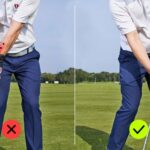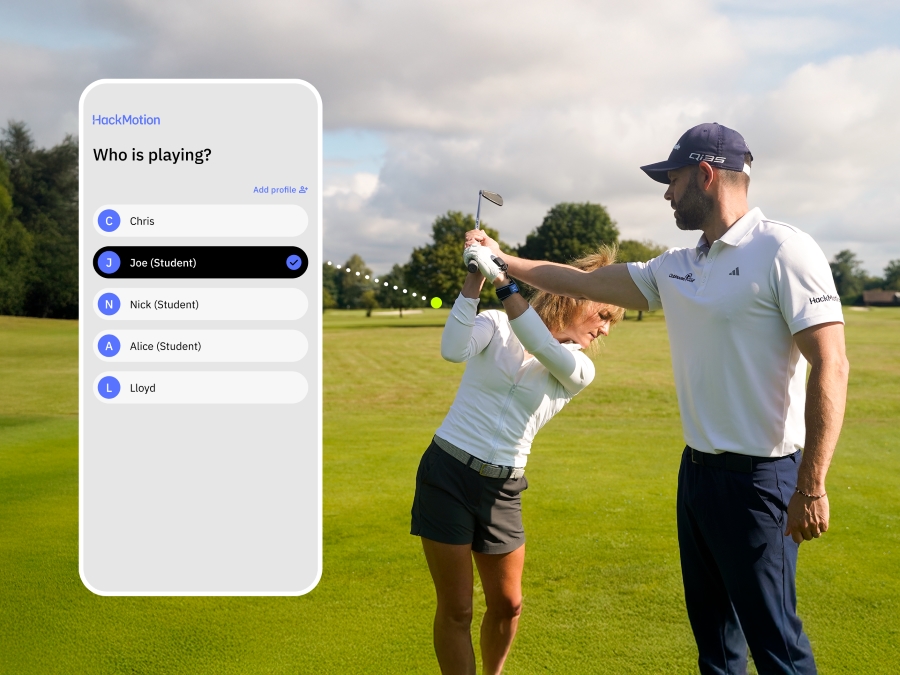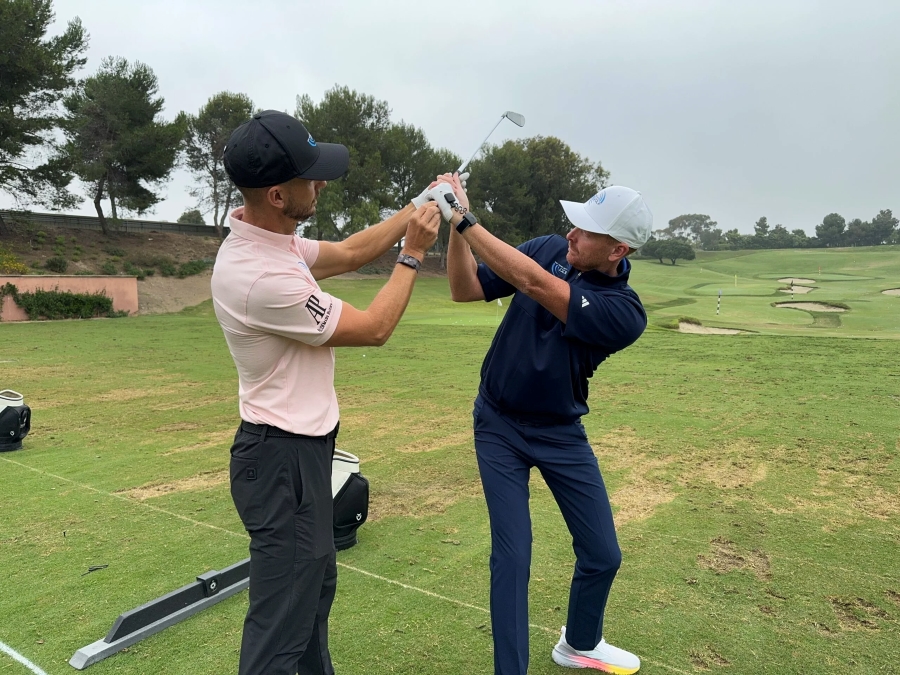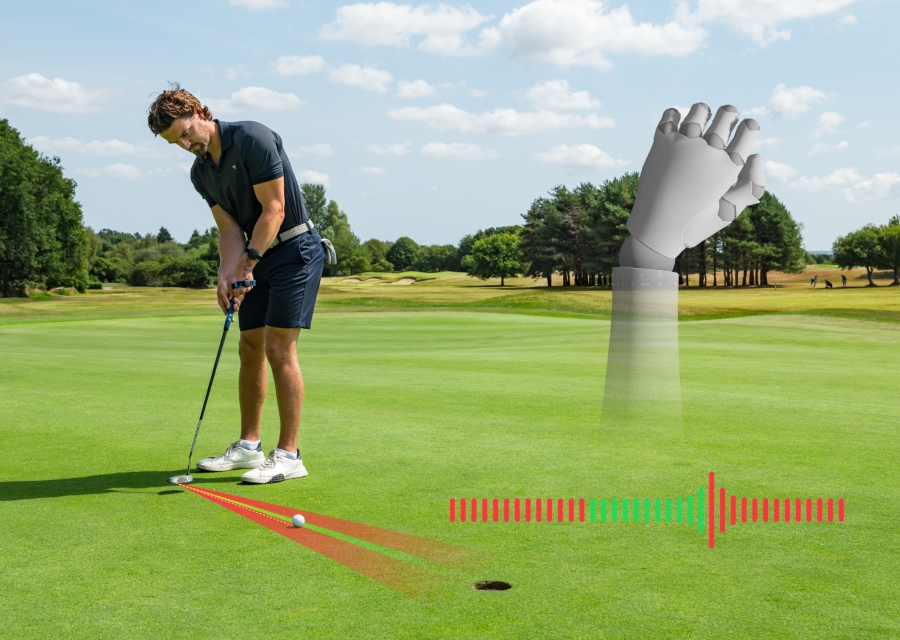How to Track Your Progress With a Golf Coach (And Actually See Improvement)
Working with a golf coach can transform your game, but only if you know how to track your progress.
Golf improvement isn’t always visible day to day. Some changes feel uncomfortable before they start producing results. That’s why tracking progress matters: it keeps you focused on what’s working and helps your coach adjust your plan.
There are three main ways to track improvement: traditional methods, modern data-driven tools, and real-time feedback from technology like HackMotion.
Here’s a basic rundown of how to track your progress with a golf coach.
Golf Coaching Progress Tracking (Key Takeaways)
- Tracking progress helps you and your coach stay aligned and focused on meaningful goals.
- Start simple: use your handicap, stats, or journal notes to track performance trends.
- Layer in data from launch monitors or wrist sensors to pinpoint what’s really changing.
- HackMotion gives you real-time feedback so your practice between lessons actually reinforces what you learned.
- The best progress happens when you combine data with open communication and consistency.
Want expert help with your game? Find golf coaches near you who use HackMotion for data-driven lessons and faster improvement.
Contents
How to Track Your Golf Progress With a Coach
1. Old-School Tracking: Scorecards, Journals, and Handicaps
Before golf technology exploded, players measured improvement the simple way – by looking at results. They looked at scores and even some basic stats like fairways hit and greens in regulation.
Tracking your golf handicap throughout a golf season can help. This method, now considered more traditional, still works. For a deeper dive into what stats matter most, check out our guide on how to track your golf stats to see which numbers actually lead to lower scores.
What to track:
- Average score and handicap over time.
- Fairways and greens in regulation.
- Number of three-putts per round.
- Notes from each lesson or practice session.
Many golfers overlook how powerful a simple golf journal can be. Writing down what you worked on, how it felt, and what changed helps connect lessons to real results.
When you go out to the course and forget what you had worked on, your journal can be your resource.
2. Data-Driven Tracking: Using Numbers to Measure What You Can’t See
With the introduction of golf technology, it’s easier than ever to collect more data about your golf game.
You can look at things like where you miss, how much you miss by, the weakest areas of your game, etc.
With data tools like Arccos, Shot Scope, and launch monitors, you can measure exactly where you’re gaining or losing strokes.
Your coach might use this data to:
- Identify scoring patterns and tendencies (e.g., leaving approaches short, missing right off the tee)
- Track key metrics like swing speed, launch, and spin rates
- Compare lesson data over time
This kind of measurable feedback helps confirm whether mechanical changes are working. It also takes emotion out of the process.
Even if you “feel” like your driver is better off the tee, the numbers will give you the truth. In addition, you don’t have to be too hung up on the overall score, and you can focus more on short-term, smaller goals.
Want to get more from your coaching sessions? Learn how to maximize your golf lessons with simple tracking habits and better feedback loops.
3. Real-Time Feedback: Monitor Your Swing Between Lessons With HackMotion
If you want to take things a step further to track your progress, you can look not only at what’s going on but also at why it’s happening. That’s where HackMotion comes in.
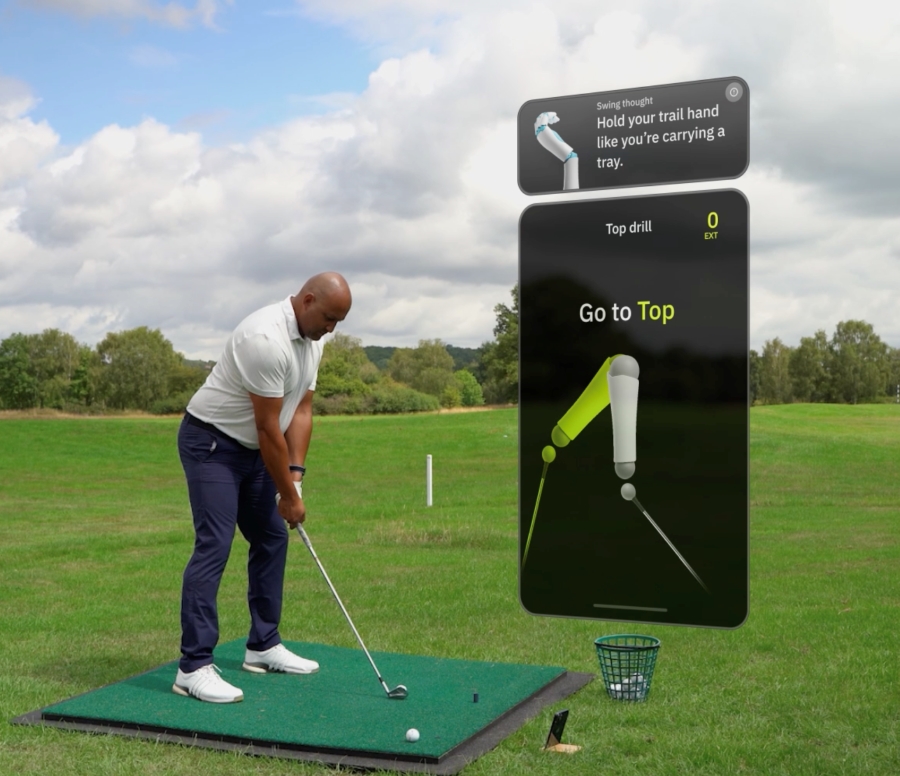
Working with a HackMotion-certified coach will help you see where your issues are, and then you can work on them without the help of your coach.
Things like wrist angles, clubface angle, and consistency are hard to work on when you are practicing without feedback.
With HackMotion, you can capture your wrist position at the top, impact, and release, compare it to your lesson data, and ensure you’re not slipping back into old habits.
How it helps:
- Review wrist metrics from your last lesson.
- Practice with real-time audio or visual feedback.
- Check progress using graphs and session summaries.
- Share swing data directly with your coach for remote feedback.
Try this:
After your next lesson, record a few swings with HackMotion and compare your flexion/extension numbers at impact to your previous session. You’ll instantly see if you’re maintaining the changes or if your wrists are reverting under pressure.
If you’re not already working with a coach, here’s how to find a good golf instructor who can guide your practice and help interpret your data.
The Role of Communication: Stay Connected With Your Coach
Even with great data, communication is key. The best progress happens when your coach knows what you’re seeing, feeling, and tracking.
Be open about:
- What feels easier or harder.
- What your HackMotion graphs or stats are showing.
- What parts of your game are (or aren’t) translating to the course.
If you’re unsure whether something’s improving, your coach can adjust drills, setups, or feedback cues. That ongoing dialogue supported by clear, measurable data is what turns lessons into real performance gains.
Final Thoughts
Tracking your progress doesn’t have to be complicated. Start simple with score trends, add data when ready, and use real-time tools like HackMotion to make every lesson stick.
If you’re planning to start lessons soon, see how much golf lessons cost and how to choose the right schedule for steady improvement.





